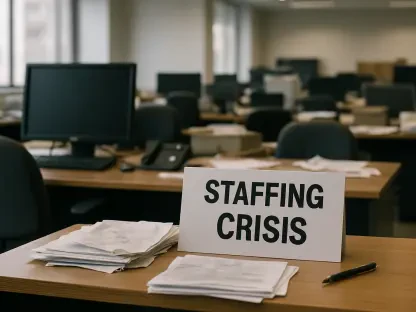In recent years, the U.S. has faced an escalating healthcare workforce shortage, a challenge exacerbated by demographic shifts, an aging population, and the aftereffects of the COVID-19 pandemic. With millions of Americans living in healthcare deserts and projections indicating substantial physician shortfalls, reforming immigration policies to attract skilled professionals is becoming increasingly critical. This looming crisis poses a threat not only to the well-being of millions of Americans but also to the sustainability of the nation’s healthcare system and economic stability.
Growing Healthcare Deserts
Data from the Health Resources and Services Administration (HRSA) show that approximately 77 million Americans live in areas where access to medical care is limited or non-existent. These so-called healthcare deserts are places where residents struggle to find primary care providers, emergency services, or specialized medical care. This shortage is projected to worsen, with estimates suggesting a shortfall of over 187,000 physicians in the next decade. This gap is further widened by the significant demographic shifts, including an aging population that requires more medical attention and services.
The situation is further strained by burnout among healthcare professionals, a challenge that was significantly exacerbated by the COVID-19 pandemic. The pandemic led to high levels of stress, mental health issues, and exhaustion among healthcare workers, prompting many to resign or retire early. These mass resignations have left substantial gaps in the workforce, especially in rural and underserved areas, making it increasingly difficult to provide adequate healthcare services. Addressing this issue requires a multi-faceted approach, including policy reforms that can attract and retain skilled professionals from abroad.
Untapped Foreign Talent
Foreign students and foreign-born workers represent a largely untapped reservoir of highly skilled professionals who could help alleviate these shortages. Many of these individuals are trained in American universities and have the expertise needed to fill critical positions in the healthcare sector. However, complex visa and citizenship pathways often prevent these professionals from staying in the U.S. after completing their education or training. By reforming these pathways, the U.S. can attract and retain valuable workers who are essential for maintaining a robust healthcare system.
A dual-pronged approach to immigration policy could prove particularly effective in this regard. On the one hand, stricter border controls can address concerns related to illegal immigration. On the other hand, providing clear and efficient pathways for skilled workers to enter and remain in the country can address the immediate workforce shortages. This strategy would be especially beneficial at a time when more people are retiring than entering the workforce. According to the Bureau of Labor Statistics, the overall labor market is expected to expand by just 6.7 million workers over the next decade, a figure that is considerably lower than the 25 million added during the baby boom years.
Facing Labor Shortages
The healthcare workforce is aging rapidly, with a significant portion of physicians nearing retirement age. Currently, 45% of active physicians are over 55 years old, and it is anticipated that 35% will retire by 2030. This impending wave of retirements could significantly impact access to healthcare, particularly in already underserved rural communities. These areas, which are already struggling to attract new medical professionals, could find themselves in even more dire situations as experienced doctors leave the workforce.
Predictions indicate a shortfall of 100,000 critical healthcare jobs in the next five years. This includes not only physicians but also nurses, technicians, and other essential healthcare workers. Such shortages can lead to longer wait times for patients, decreased access to specialized care, and overall declines in the quality of healthcare services. New immigration policies that facilitate the entry and retention of skilled healthcare workers could be a vital solution to fill these gaps and ensure that all Americans receive the healthcare they need and deserve.
Bipartisan Support for Solutions
There is broad bipartisan approval for legal immigration as a solution to the current labor market gaps. Currently, approximately 18% of the healthcare sector comprises foreign-born workers, and public opinion strongly supports policies that would make it easier for foreign doctors to remain in the U.S. Surveys indicate that around 90% of registered voters back such initiatives, particularly if these doctors practice in areas with a shortage of medical professionals. This widespread support underscores the importance of immigration policy reform in addressing the healthcare workforce crisis.
Several existing programs demonstrate the potential benefits of such policies. For instance, the Conrad 30 program allows each state to retain up to 30 foreign-trained physicians in underserved areas. This initiative has proven to be highly effective in improving healthcare access in rural regions. Building on this success, the DOCTORS Act, a bipartisan initiative, aims to enhance this program by redistributing unused waivers to states with greater needs. If implemented, this act could enable states to retain over 100 U.S.-trained physicians in rural areas, significantly improving healthcare access for underserved populations.
Broader Economic Impacts
Tailored immigration policies would not only benefit the healthcare sector but also have positive ripple effects across other industries facing workforce shortages. Sectors such as technology, education, skilled trades, and construction are also grappling with similar challenges. By addressing both immediate workforce gaps and long-term demographic challenges, such policies would benefit the entire U.S. economy. Data from the Brookings Institution supports this claim, indicating that reductions in net migration could impede GDP growth by shrinking the labor force, decreasing consumer spending, and negatively impacting business investments and hiring.
Furthermore, skilled immigration brings diverse perspectives and innovations that can drive economic growth and improve the quality of life for all Americans. The international expertise and different viewpoints that foreign-born professionals offer can lead to breakthroughs in various fields, stimulate entrepreneurship, and enhance competitiveness in the global market. Neglecting to facilitate skilled immigration means missing out on these potential benefits, leading to stagnation and ongoing shortages in vital sectors of the economy.
The Path Forward
In recent years, the United States has been grappling with an intensifying shortage in its healthcare workforce. This issue has been greatly worsened by changing demographics, an aging population, and the lingering impacts of the COVID-19 pandemic. Many Americans are currently living in areas known as healthcare deserts, where access to medical care is extremely limited. Additionally, future estimates suggest significant physician shortages. Addressing this problem by reforming immigration policies to attract skilled healthcare professionals is becoming more urgent. Such a growing crisis threatens not only the health and well-being of millions of Americans but also the overall sustainability of the nation’s healthcare system and its economic stability. Proactive measures are needed to ensure that the healthcare system can meet the demands of the population now and in the future. The strength of the healthcare workforce is crucial for maintaining both public health and economic prosperity.









